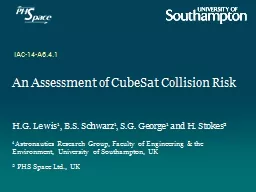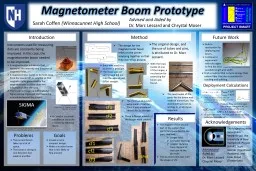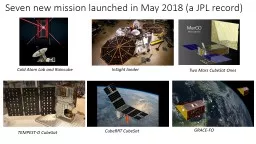PPT-A Cubesat -based alternative
Author : tawny-fly | Published Date : 2018-10-22
for the Juno Mission to Jupiter FSW17 Authors Patrick H Stakem Johns Hopkins University Capitol Technology University pstakem1jhuedu Rodrigo Santos Valente Da
Presentation Embed Code
Download Presentation
Download Presentation The PPT/PDF document "A Cubesat -based alternative" is the property of its rightful owner. Permission is granted to download and print the materials on this website for personal, non-commercial use only, and to display it on your personal computer provided you do not modify the materials and that you retain all copyright notices contained in the materials. By downloading content from our website, you accept the terms of this agreement.
A Cubesat -based alternative: Transcript
Download Rules Of Document
"A Cubesat -based alternative"The content belongs to its owner. You may download and print it for personal use, without modification, and keep all copyright notices. By downloading, you agree to these terms.
Related Documents














